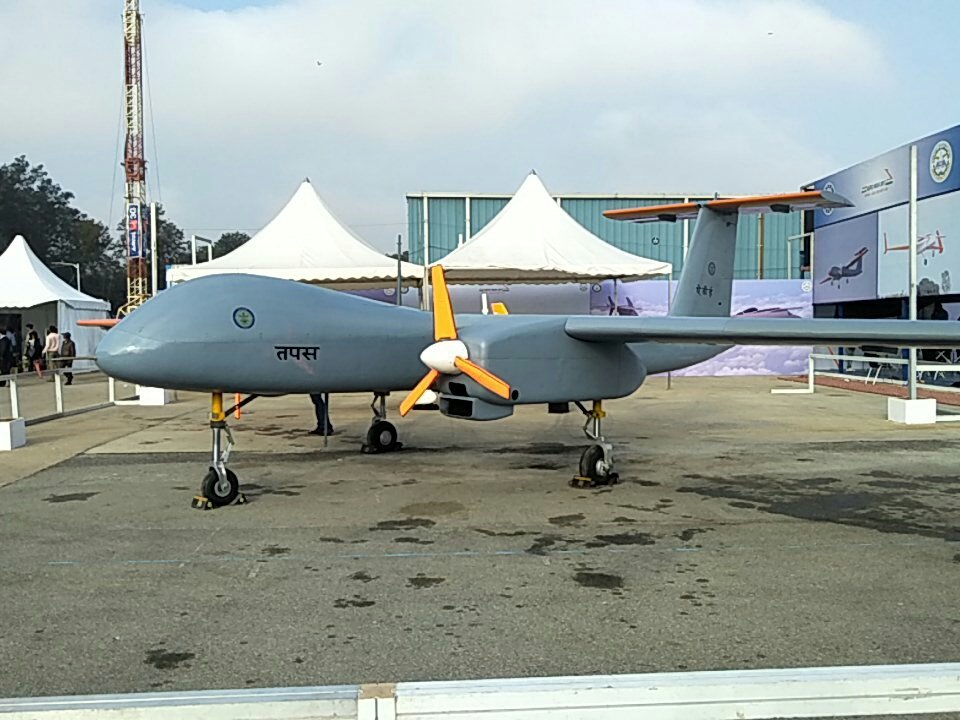India’s drone wave continued at Aero India this year. Several foreign vendors, notably Israel’s IAI and Elbit-Adani, U.S. firms Textron Defense and General Atomics, Europe’s Thales and UMS Skeldar showed their unmanned wares off at Aero India 2017. It’s been a trend over the last three shows with India’s exponentially increased unmanned systems requirement. Starting 2015, the number of Indian systems at the show has also spiked, especially from private industry. The show this year has also proven that India currently has drones of every possible category in various stages of development, with some of them very close to entry into service with government agencies. We noticed a great deal of foreign interest in the Indian-made drones, especially ones made by private industry. Livefist does a round-up of the drones that have stood out this year.

We start with the smallest, the brand new Mk.2 version of the in-service (with the Indian Army) NETRA quadcopter, above, that the DRDO developed with collaboration with a private Indian firm IdeaForge. The new version, unveiled at the show this year, sports expanded endurance (sources at the DRDO pavilion said nearly 50%), a brand new data link with video. The Indian Army, Indian Air Force and National Security Guard are firmly interested.

Reported first here on Livefist, Aero India 2017 revealed a new all-Indian UAS programme: the R-UAV by the Aeronautical Development Establishment (ADE), an effort to unman the Chetak/Alouette III helicopter license-built by HAL. This is hugely significant, since it comes after Israel’s IAI and HAL failed to evolve a specimen of the NRUAV, as they called it, capable of safely landing on a rolling & pitching naval deck. There are no firm timeframes on the continuing effort, but it is well known that the Indian Navy has been looking for years for deck-based unmanned rotorcraft for over the horizon maritime ISR, targeting and patrolling. The Indian Navy has assessed comparable platforms like the NorthropGrumman MQ-8 Fire Scout, the UMS Skeldar and Schiebel Camcopter S-100. It remains to be seen if the Indian Navy is willing to wait and bet on the R-UAV. In the poster behind the R-UAV, note the Golden Hawk and Pushpak, two hand-launched mini-drones also in the ADE catalogue.

An interesting debut at Aero India 2017 was the DRDO’s Tethered Autonomous Multi-copter Platform (TAMP), which could be deployed from a vehicle or the ground for quick-fix airborne surveillance or as a signal relayer to extend range to mini drones in the air. Endurance could be long as the TAMP would draw sustenance through its tether. To be sure, the TAMP is still very much in development, with scientists at the stand confirming that weight reduction and new materials were priority areas before a operable prototype would be demonstrated by the end of this year.
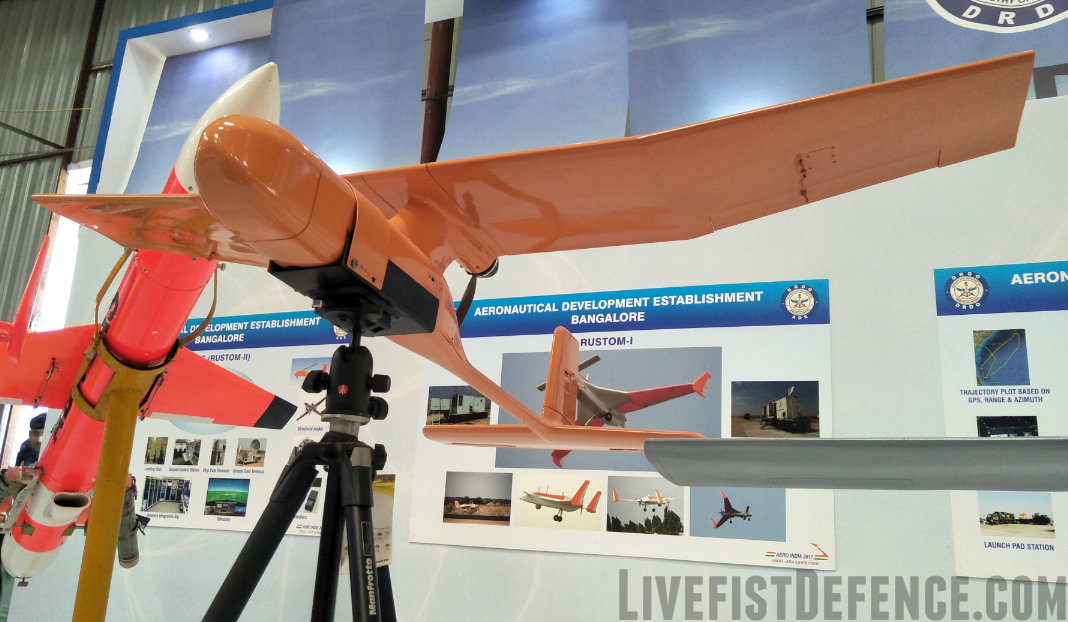
The DRDO Indian Eagle (earlier Imperial Eagle!) returns to the show this year. The hand-launched-belly-landing mini drone has been demonstrated to a variety of agencies and sparked interest with state police services, the Indian Air Force and India’s principal anti-terror force, the National Security Guard. The team at ADE is currently working to reduce weight, beef up comms and produce more payloads to make the Indian Eagle a well-rounded offering for the domestic and international markets. The Indian Army, which has been looking at the U.S. Raven drone could look at the Indian Eagle once fully ready. Next to the Indian Eagle is the Lakshya targeting drone, already in service with the Indian armed forces and a possible export soon.
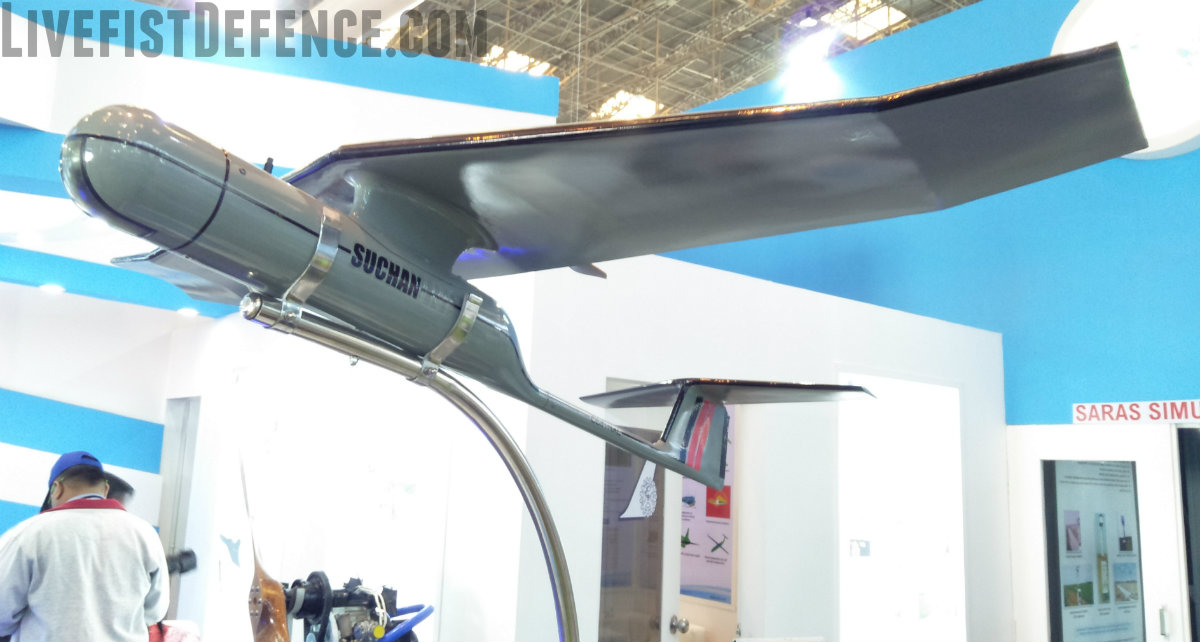
The NAL Suchan (earlier Sly Eagle) also returns to the show this year, and is similar in most respects to the Indian Eagle, as a hand-launched-belly-landing fixed wing, push-propeller type mini-UAS. Tested both in the plains as well as at high altitude in Ladakh, the Suchan has been similarly pitched to the armed forces, police services and counter-insurgency units, with possible interest likely to firm up this year.
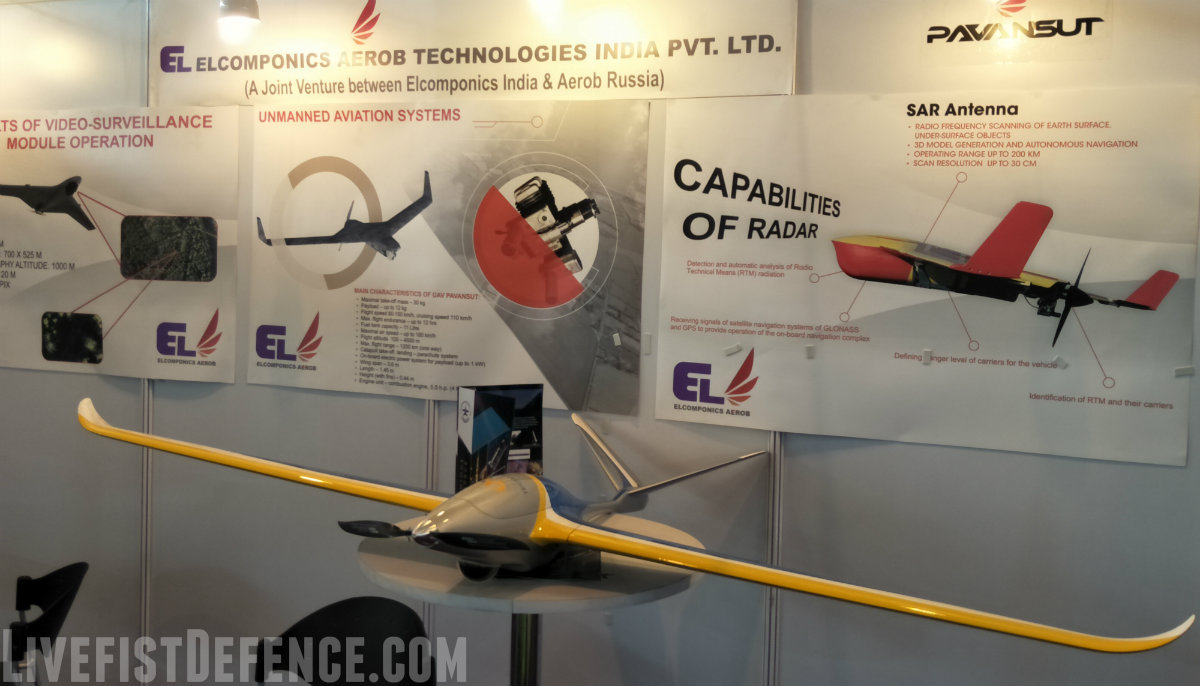
This is interesting, and representative of the drone wave in the country. Noida-based electronic components and appliances manufacturer Elcomponics tied up last year with Russia’s Aerob and is at the show this year with a slew of unmanned systems offerings that it intends to build in India for potential customers. Showcased at their stand is this, the Pavansut 30 VR, which claims a range of 1200 km and endurance of 12 hours, with a variety of payloads including SAR/infrared/video and GMTI radar. Another Indian firm, Bengaluru-based Merlinhawk Aerospace was also at the show this year — traditionally an aviation electronics company, it showcased its own fixed wing surveillance drone this year.
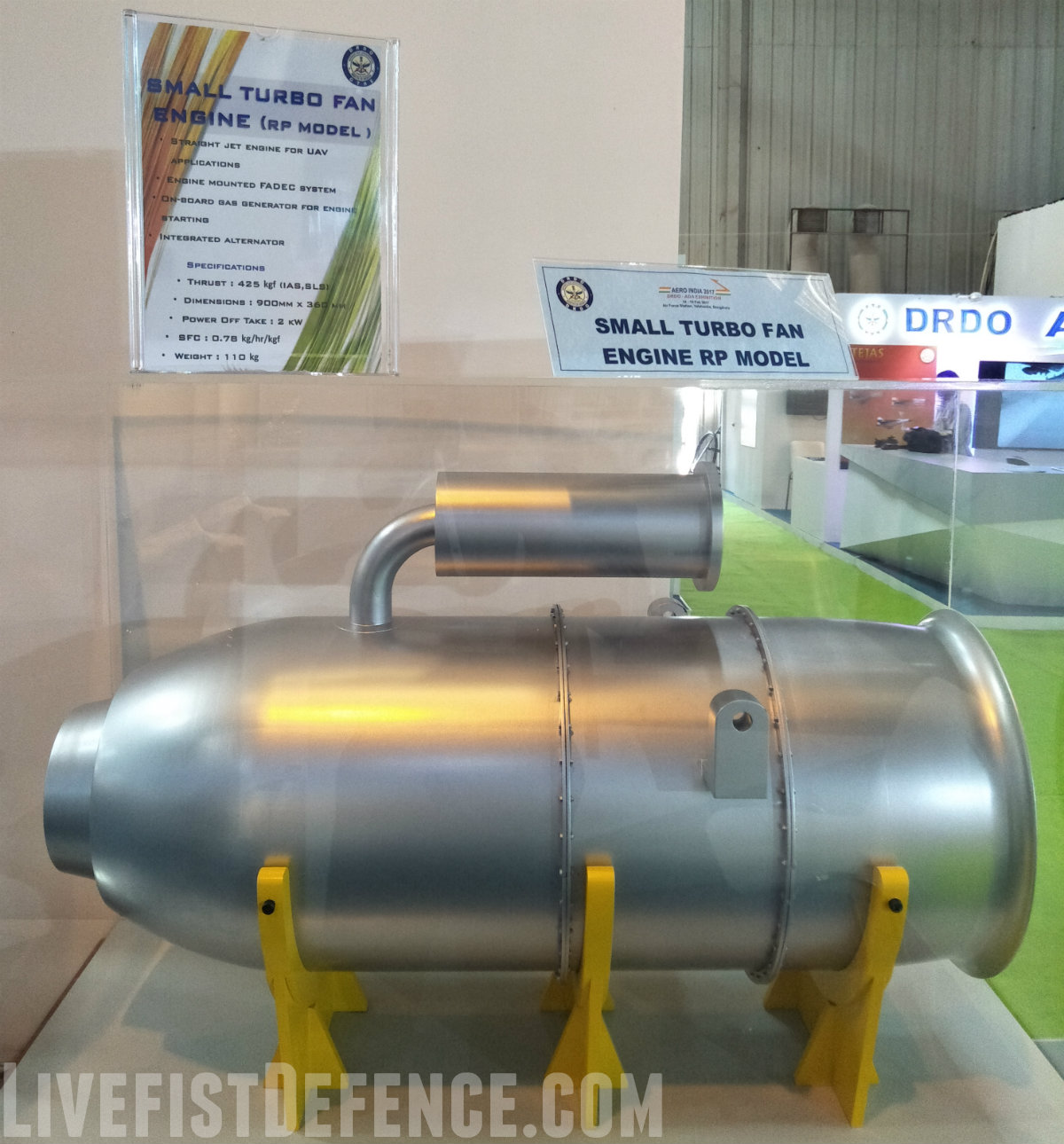
Making a return to the show this year is this rapid prototyping model of the DRDO/GTRE mini turbofan engine specifically for UAS applications. Scientists said preliminary work on the engine had begun and that it was aimed at a family of future unmanned systems, including a possible jet version of the Tapas (below). The Tapas is currently steeped in flight test mode, with the team looking hard at reducing weight and moving to systems trials by the end of this year. As reported first by Livefist, a weaponised version of the Tapas will come later.
